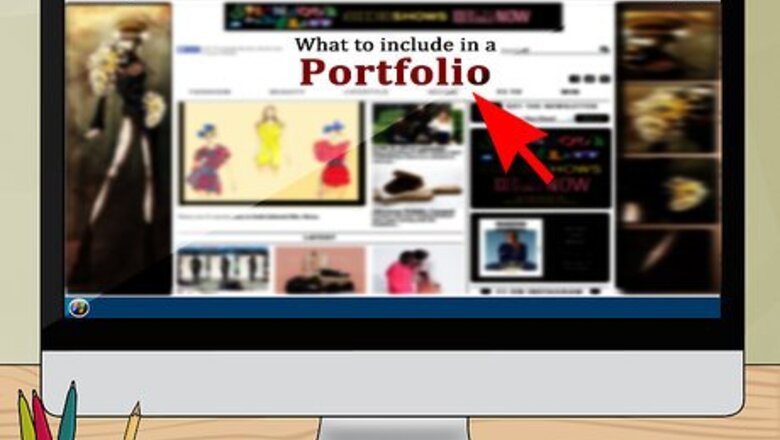
views
Brainstorming a Storyline or Arrangement
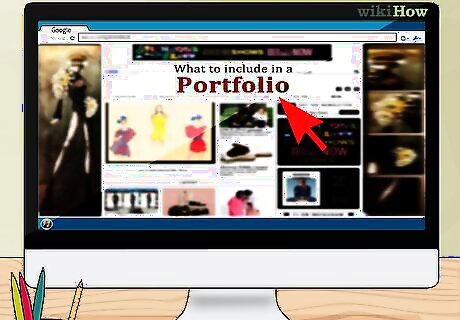
Check for instructions or guidance on what to include. If you’re applying to a design program, they should give a good idea of what they want to see in your portfolio. If you’re designing a professional portfolio, you may not have explicit directions. Generally, you should include creative investigation, drawings that show your ability to translate 3D into 2D, color studies, and, if relevant, photos of 3D work that you’ve done. Do tailor your portfolio to the specific application or the type of work that you want to do. You may want to put together more than one portfolio if you’re applying for different positions.
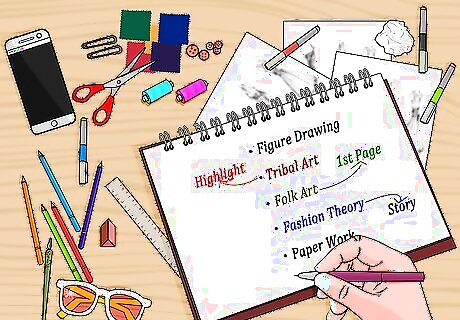
Come up with an organizing principle. Whatever you do, you should probably try to keep different parts of one project together as much as possible. So, for example, if you explored organic structures like feathers and leaves for one project and tribal or folk art for another, try to keep the various parts of those projects together. Ultimately, you need an organizational principle because you'll have to choose how you want to present those projects. Do you want to tell a story, showing the links between the different angles you have explored? Do you prefer the simplicity of chronological or reverse chronological order? Think about the work that you've done and see if there are any particular connections that you want to highlight. Remember that whatever you come up with, it should be clear to a viewer what you’re trying to communicate. If you're really unsure about this, just stick with something simple, like presenting your most recent work at the front to capture the viewer and then dedicating the rest of the portfolio to showing how you got there. Note that for professional portfolios, you should arrange your work with the most recent pieces first and put older material in the back.
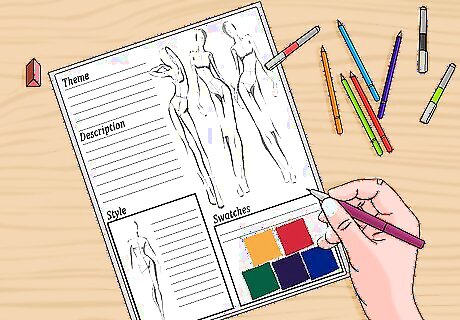
Write an explanation to show how you want to organize your work. As with any project, it's easy to become so enthusiastic about an idea that you don't really plan out how you're going to execute it. Before you know it, you're overwhelmed by everything you didn't plan for. The point of this step is to make sure that you've maximized the presentation of your work and that all the parts will be as clear to an outsider as they are to you. Don't just think about what your storyline is: assess how each part fits into that story. Play around with different arrangements and think about how each arrangement affects how your works will be perceived. You may create a diagram or an outline to illustrate why you organized your pieces in a certain way. Show or explain your idea to someone who has worked with you throughout your creative development. Ideally, that person should be a mentor, such as a teacher or someone close to you, who has some experience with building portfolios and can provide feedback on how effective your ideas will be.
Compiling Your Materials
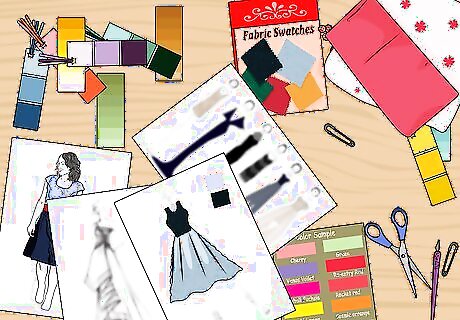
Gather your materials. Base your materials on the guidelines provided by your specific program. Color samples, fabric swatches, investigative pieces, sketches, photos: everything. You’re not going to put all of these items into your portfolio, but do start with the complete collection. Note that you usually can't include actual pieces that you've made, like a corset or a pair of a shoes. Instead, have professional-looking photos taken of those pieces and include the photographs in your portfolio as exhibits of your work.
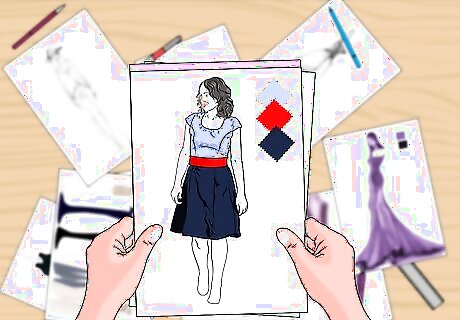
Showcase your strongest ideas. You may not have the resources to make what you're designing, or you may not have all of the skills yet--that's okay. The person looking at your portfolio wants to see how you think and create, so show them your pen and ink sketches or your charcoal drawings. You need to have a couple of different examples of your work represented as well as figure drawings that will demonstrate your ability to represent three dimensions on a two dimensional surface. Anything more than that is bonus material. Anna Wintour Anna Wintour, Editor-in-Chief, Vogue Magazine Develop your own point of view as a designer. "It is important always to have really original talent. There are lots of good designers that make attractive clothes and make women look beautiful. But at the same time, one doesn't want to lose the idea that there is someone out there who can change the way you look at fashion."
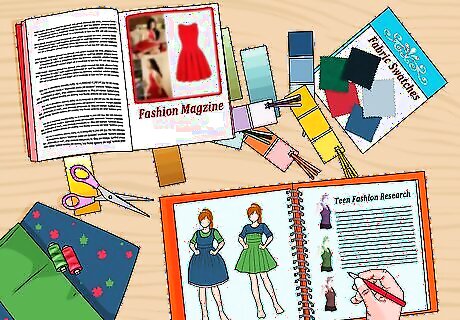
Pick out a selection of pieces that show your development in each of your projects. These pieces may be a combination of things that have inspired you, early work that you did, or first steps in a developed idea that will reappear later. Try to pick out two or three pieces for each project that you've explored. Do include casual side projects if you’re not making a targeted professional portfolio. These unofficial works show the diversity and range of your talents. Plus they offer some insight into your interests. If you have a large volume of work, try to select primarily from your most recent explorations. Include some of your older work to show your development, but emphasize where you're at right now, especially if you're making your portfolio for professional advancement.
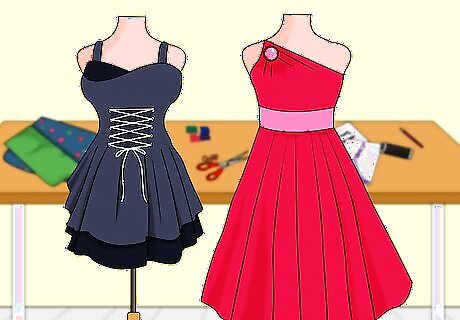
Select your best pieces. You definitely want to include your best work in your portfolio. Aim to have between one and two pieces of really high quality work per project. Go for pieces that represent your personal style and approach to design. Maybe you tend to focus on designing for a certain demographic (young, fashion forward women, androgynous men, active children, etc) or around a certain theme. You may then include pieces that illustrate your ideal customer or consumer. You may select pieces that have also been well regarded in your design classes and considered some of your best work by professors and peers. Make sure that these works incorporate a range of different types of styles or approaches to fabric and materials. You shouldn’t include more than two pieces from one style or approach. For example, maybe you have two pieces that showcase your ability to work with leather. You should also include one to two pieces that show off your ability to work with a different material, like silk or jersey. This will illustrate that you are able to work with several different materials and in several different styles.
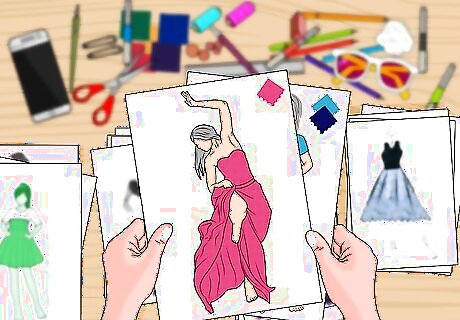
Fit the pieces together into your chosen arrangement. You may want to begin by laying things out side by side or on a table, just to play with the order. If you choose to have separate sections for each category, figure out how you want to organize the pieces within a particular section. Ask yourself questions like, does a chronological order make sense? Do you have clusters of works that you should group together by subject or by medium? If you discover that something doesn’t fit well with your arrangement, don’t include it. See if you have a different piece works better with the other parts of the section. You want everything in your portfolio to fit well together.
Completing Your Portfolio
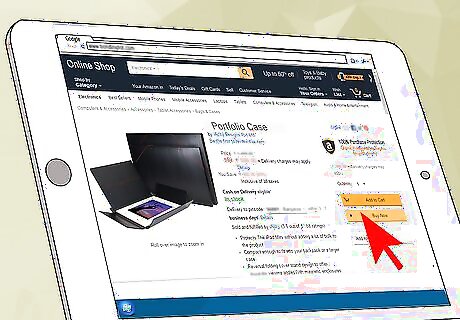
Buy or find a portfolio or presentation case. You can find both portfolios and presentation cases online or at good art supply stores, especially if you already live near an art or design school. Which one you need will depend on the pieces you’re presenting. The case should be neat and clean, but if you're a student, it doesn't need to be high end as long as it is functional and effectively displays or stores your works. You may want to invest in a nicer case if you are presenting your portfolio in a professional setting. Presentation cases are like zip binders, in that they generally include sheet protectors and are best for smaller works. They are literally meant to "present" your work, so they're probably your best option if you're just starting out.> If you have larger pieces, like paintings, you may want to invest in a portfolio, which is larger and intended more for transporting works than for presenting them. Rather than presenting your works in a ring binder-style setting, you'll probably end up with loose sheets and works stacked together securely inside.
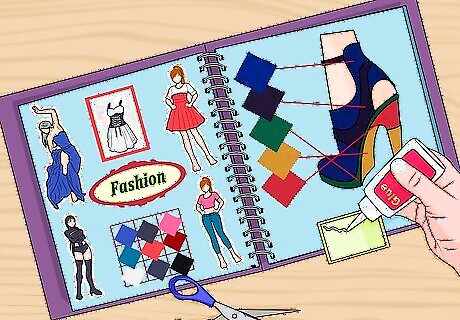
Collage loose supplemental items together and glue them onto good paper. Often your investigative pieces, like interesting textures or structures, will involve a lot of small samples and clippings. Ideally, the person who reviews your portfolio should just be able to flip through it, so collage all of the smaller pieces on letter-sized sheets of paper to make them more readily accessible. Group items by type, or arrange them in a way that makes sense. Provide labels like "color work" or "experimental glazing methods" as needed, and add small explanatory lines or paragraphs if it is necessary for you to show the reader what you were doing. You should use high-quality, acid free paper. Use high-quality glue with a brush that you can apply to the edges of the collage pieces and attach to the paper. Try to avoid rippling of the collage pieces when you adhere them to the paper by using one finger to gently smooth out each piece. Keep your work area tidy so there are no glue trails or sloppy edges on the collage pieces. You want the collage pieces to look professional and clean.
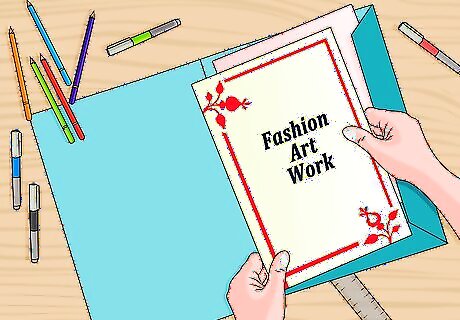
Arrange your works and supplemental materials in the case. You should already have laid everything out in order, but if you haven’t, start there. Check again to ensure that everything makes sense the way that you have arranged it. Then tuck all of the pieces into your case.
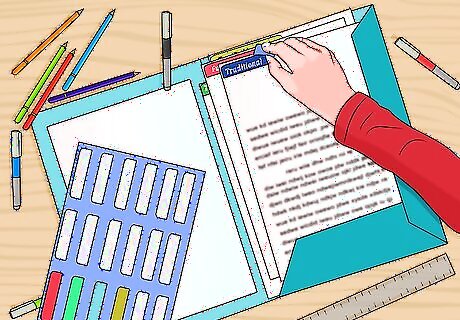
Include labels if necessary. You are primarily emphasizing visual design elements and obviously your main communication is through that work. However, if you want to label your creative investigations or each of the stages in a project to make it clear how you progressed, then do so. Just make sure that the label is neat and placed so that it is not covering anything important. Use a computer to print your labels if you have poor handwriting.
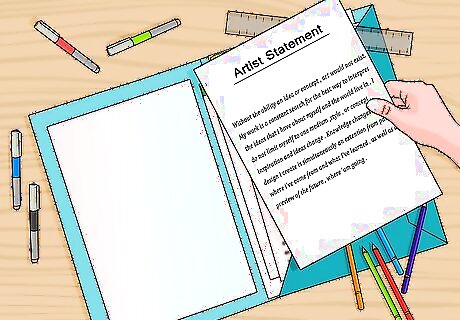
Add written supplements if required. Requirements vary widely, but depending on the program, you may need to include an essay or an artist statement. Usually, the program will supply its own guidelines for an essay. Artists' statements are less program-specific. An artist statement essentially summarizes your influences, direction, and creative inspiration in a paragraph or two. If you have never written an artist statement before, How to Write an Artist Statement is very helpful.




















Comments
0 comment